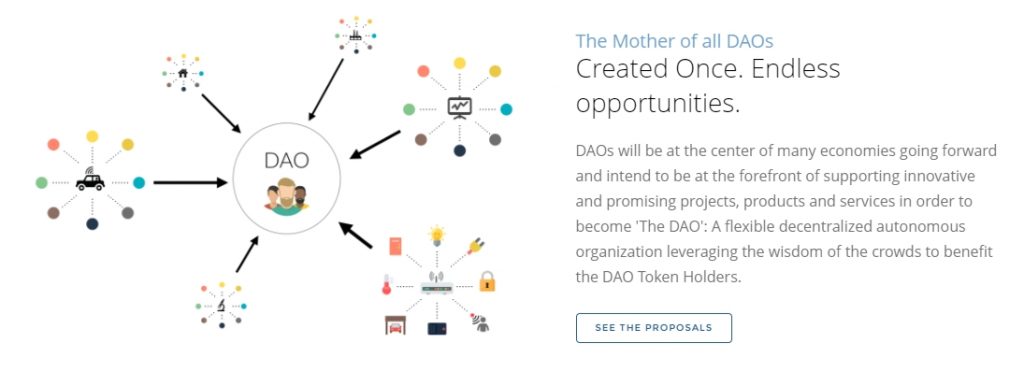Once upon a time, there was only one Ethereum blockchain, with only one native token (ETH). Ethereum was the first big smart contract chain, and it’s still the leading one. However, in case you didn’t know, there’s another blockchain with his name and the same origins: Ethereum Classic (ETC). What happened there? What’s up with ETH, ETC, and probably others?
Ethereum was launched seven years ago, on July 30, 2015 —we recently passed its anniversary. Ethereum Classic was part of this network until a year later when the chain was split. A bad and big event was responsible for this back then. But, if very unlikely, it could happen again this year. Let’s explore what happened and what’s going on now.
The DAO incident
In 2016, the landscape inside Ethereum was very different. No Decentralized Finance (DeFi) apps or Non-Fungible Tokens (NFTs) yet, and only some Initial Coin Offerings (ICOs) around. Only ETH, and not a clue of ETC. We currently have an awful lot of interesting projects running on this network, but back then there were just a few. The most notable was, probably, The DAO.
We’re not meaning just a Decentralized Autonomous Organization (DAO), that it was, but “The DAO” was the name of the project itself. Developed by the startup Slock.it, this was a kluger Vertrag platform designed to raise funds for different projects. If these projects could thrive, then the profits in ETH would be distributed among all investors.

In May 2016, their ICO raised 12.7 million ETH —around $150 million at the time and $20.6 billion today. It was the higher-grossing ICO of the time, surpassing Ethereum itself (which was also born from an ICO in 2014). There was a lot of enthusiasm around it, and a lot of eyes on it.
Several of those (expert) eyes warned about certain vulnerabilities that could be exploited on The DAO by malicious hackers. Slock.it didn’t listen on time, and the worst happened.
The hack and the split
A black hat hacker took advantage of an exploit during the withdrawal process. The latter wasn’t so easy for investors, indeed. It could last up to 48 days after the creation of a “Child DAO”, which was a copy with the same rights as the original.
The issue inside the code was that the funds in ETH were transferred to the Child DAO before updating the balance. So, the hacker made the same request again and again to the Child DAO, until they siphoned 3.6 million ETH (around $60 million at the time). Wie Laura Shin described, “It was as if the attacker had $101 in their bank account, withdrew $100 at a bank, then kept the bank teller from updating the balance to $1, and again requested and received another $100.”

The amount ($60 million) doesn’t sound amazing now when we’ve had hacks of over $600 million on Ethereum platforms. However, it was scandalous in 2016. Enough for everyone to panic, even the Ethereum Foundation itself. That’s why Vitalik Buterin vorgeschlagen to carry out a hard fork (chain split) to recover the stolen funds.
This, put more simply, meant cloning Ethereum, erasing the history of the theft from the new blockchain’s record, and starting a new virtual history of transactions with only the “legit ones” included. New chain, clean slate.
Certainly, the proposal generated great controversy because it seemed to go against the ideals on which this platform was built: to modify what in theory cannot be modified. The fact that a centralized authority was able to change the network to that extent looked unacceptable. But everything was fixed with votes by the community, and this option won with 97% acceptance —at least from the 5.5% of ETH addresses that participated.
And ETC vs. ETH was born
After the split, the chain was divided into two, with their respective coins: the new Ethereum (ETH) and Ethereum Classic (ETC). Or the new chain and the original blockchain in which the terrible theft had occurred. At first, everyone was waiting for the second network to quickly die, since the miners would move to the new one. But that didn’t happen completely.

Instead, a lot of miners chose to stay on the old chain, keeping it alive. Several crypto exchanges joined soon. The old ETH users gained new ETC coins in a 1:1 ratio from their previous balances, thanks to the split. So, for example, if they had 50 ETH before the hard fork, they obtained an additional 50 ETC after the event. At a much lower price per token, though, since ETH is still considered more valuable. Something very similar to what happened more recently with Terra (LUNA and LUNC).
The new Ethereum is still maintained by Vitalik Buterin and the people behind the Ethereum Foundation. Meanwhile, Ethereum Classic is now maintained by several investors and miners worldwide, in a decentralized fashion. For instance, just recently, AntPool (one of the largest mining pools) invested $10 million in ETC.
On this blockchain, the code is the law. They voluntarily chose to keep the original Ethereum history, and don’t forget the failings. Their main website describes ETC as “The original, untampered, permissionless, decentralized, immutable, leaderless, uncensored Ethereum”. Also, and very important now, the Proof-of-Work (PoW) Ethereum.
In May 2018, Ethereum Classic deleted the difficulty bomb from its blockchain. This means that ETC will always be a PoW network, available to mine new coins. Beyond the ideals, that’s a key difference from its parent chain, which is changing to Proof-of-Stake (PoS).
ETH, ETC, and more? The Merge comes
We’ve already talked about Ethereum 2.0 und The Merge previously. These concepts boil down to a simple idea: making crypto mining impossible on Ethereum (ETH). For the next era of this blockchain, the selected system is Proof-of-Stake (PoS), which doesn’t require mining. Instead, there will be validators locking their coins and verifying transactions. Without any need for special machines (ASICs) or energy.
As expected, the current Ethereum miners aren’t very happy about it —despite they knew this was the plan since the beginning. There’s nothing they can do against it, though. They can sell their machines and become validators with the funds (since at least 32 ETH are needed) or migrate to another mining network. Like Ethereum Classic, of course, but there’s a last option.

ETC doesn’t have the same adoption and capabilities as ETH —at least, so far. They also handled some serious security issues, like 51% attacks to control the network. That’s maybe why several miners and investors, led by Chandler Guo, are currently lobbying to create a new fork of Ethereum after The Merge.
Dubbed “ETH POW”, this hypothetical chain would preserve the PoW system after The Merge. Beyond that, its features are unclear now. If it really happens, all the current ETH users will get some additional coins from that chain (like it happened before), and all the associated services and tokens on Ethereum would have to decide whether to support the new chain or not.
Haltegurt (USDT), for instance, has already implied that they’ll only support the PoS Ethereum. Others may be ETH POW supportive, while a final portion may leave to Ethereum Classic. We’ll only know in the next months. For now, we can only see that ETC increased by over 157% since the last month [CMC]. Maybe that’s a signal.
Willst du ETH handeln, BTC, und andere Token? Du kannst es schaffen sicher auf Alfacash! Und vergessen Sie nicht, dass wir in unseren sozialen Medien über dieses und viele andere Dinge sprechen.








